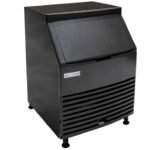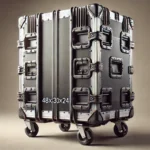If you’ve ever come across the term “fd /u1k5reclzzh4” and thought, “What on earth is that?” you’re not alone. Let’s break it down. Here’s the deal: “fd /u1k5reclzzh4” could be anything from a code, a file directory, or even a unique identifier in a specific system. This term pops up in different contexts, and its meaning can change depending on where you find it. So, how do you figure out what it means for you?
Well, the first step is understanding the basics of file directories and codes. Once you’ve got that down, the pieces will start falling into place. But let’s not get ahead of ourselves. First, let’s dive into what exactly this keyword represents.
The Mystery Behind “fd /u1k5reclzzh4”
“fd /u1k5reclzzh4” might sound like a random jumble, but in the world of tech, there’s always a reason behind the code. Let’s unpack it bit by bit:
- “fd” is often shorthand for “file directory” or “file descriptor.”
- “/u1k5reclzzh4” is likely a unique identifier – something that tells the system where to look or what to pull up. But why use something so complicated? Why not just label it “File A” or “Folder B”?
Here’s why: the tech world loves specificity. And in a sea of endless data, unique identifiers like “u1k5reclzzh4” make sure that each piece of info has its own unique spot. It’s like giving each item its own locker. And no two lockers can have the same number, right? This helps avoid any mix-ups and ensures you’re accessing the exact file or piece of data you need.

Why Should You Care About “fd /u1k5reclzzh4”?
You might be thinking, “Great, but what does this mean for me?” Here’s the thing: if you’re dealing with tech, chances are you’ve seen or will see similar strings of characters. Understanding how these identifiers work can make navigating files, systems, and even coding a whole lot easier. Imagine searching for something in a massive warehouse. Wouldn’t it be easier if every item had a specific location code? That’s what “fd /u1k5reclzzh4” does. It’s like a treasure map for data, guiding you straight to what you need.
A Real-Life Example: The Code Breakdown
Let’s say you’re working on a project with multiple files. Each file has its own code – just like “fd /u1k5reclzzh4.” Your job is to find a particular file quickly. By recognizing the pattern of these codes, you can easily navigate the project without wasting time. It’s like sorting through a pile of clothes by color rather than by randomly picking things up. It just makes everything simpler and more efficient.
Breaking Down “fd /u1k5reclzzh4” in Everyday Terms
Alright, let’s put this in everyday language. Think of “fd /u1k5reclzzh4” as the ultimate shortcut to finding what you need in a massive filing cabinet. Instead of flipping through every folder, you’ve got a specific code. And this code is your golden ticket to finding that exact piece of information. No guesswork, no hassle. Just direct access.
Here’s a quick breakdown:
- “fd” tells you it’s related to a file.
- The string “/u1k5reclzzh4” acts as a map, leading you right to the file’s location. It’s like GPS coordinates for your data. If you’ve got the code, you’ve got the power to navigate any system.
How to Make “fd /u1k5reclzzh4” Work for You
So, now you know what “fd /u1k5reclzzh4” is, but how can you actually use it? Here are some tips:
- Recognize Patterns – Codes like these often follow specific patterns. The more you see them, the easier it is to decipher.

- Use it as a Shortcut – Instead of scrolling through endless files, use codes to jump straight to what you need.
- Stay Organized – Keep track of these codes in a way that makes sense to you. This can save you loads of time and effort.
FAQ: Common Questions About “fd /u1k5reclzzh4”
Q: Is “fd /u1k5reclzzh4” a password or a code? A: It’s more of a code than a password. Think of it as a unique label that helps identify a specific file or location.
Q: Where might I encounter “fd /u1k5reclzzh4”? A: You could see this in a variety of tech settings – from database management to software development. It’s not exclusive to one area.
Q: Can I create my own “fd /u1k5reclzzh4” codes? A: Absolutely! If you’re working on a project, creating similar codes can help you stay organized. Just make sure they’re unique and meaningful to you.
Q: How do I remember codes like “fd /u1k5reclzzh4”? A: One way is to create a system or cheat sheet. Use acronyms or mnemonic devices to help you recall them.
What’s Next? Mastering the Art of Code
Now that you’ve got a handle on “fd /u1k5reclzzh4,” you’re ready to dive deeper. Whether it’s working with files or managing data, understanding these codes can save you tons of time. And remember, the key to mastering tech lingo is taking it one step at a time. So next time you see “fd /u1k5reclzzh4” or something similar, you’ll know exactly what to do.
Wrapping Up
To sum it all up, “fd /u1k5reclzzh4” is more than just a random string of characters. It’s a powerful tool for navigating the complex world of tech. Armed with this knowledge, you’re now better equipped to tackle file directories and unique codes like a pro. From now on, whenever you encounter “fd /u1k5reclzzh4,” you’ll see it not as a puzzle but as a key to unlock information with ease.











